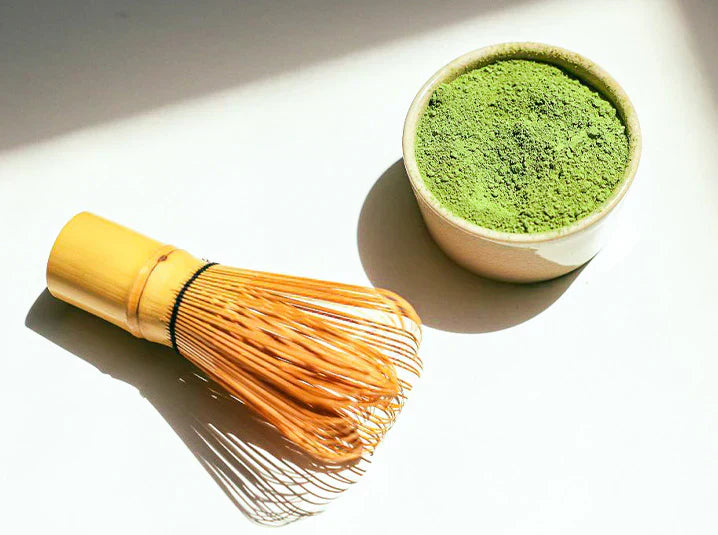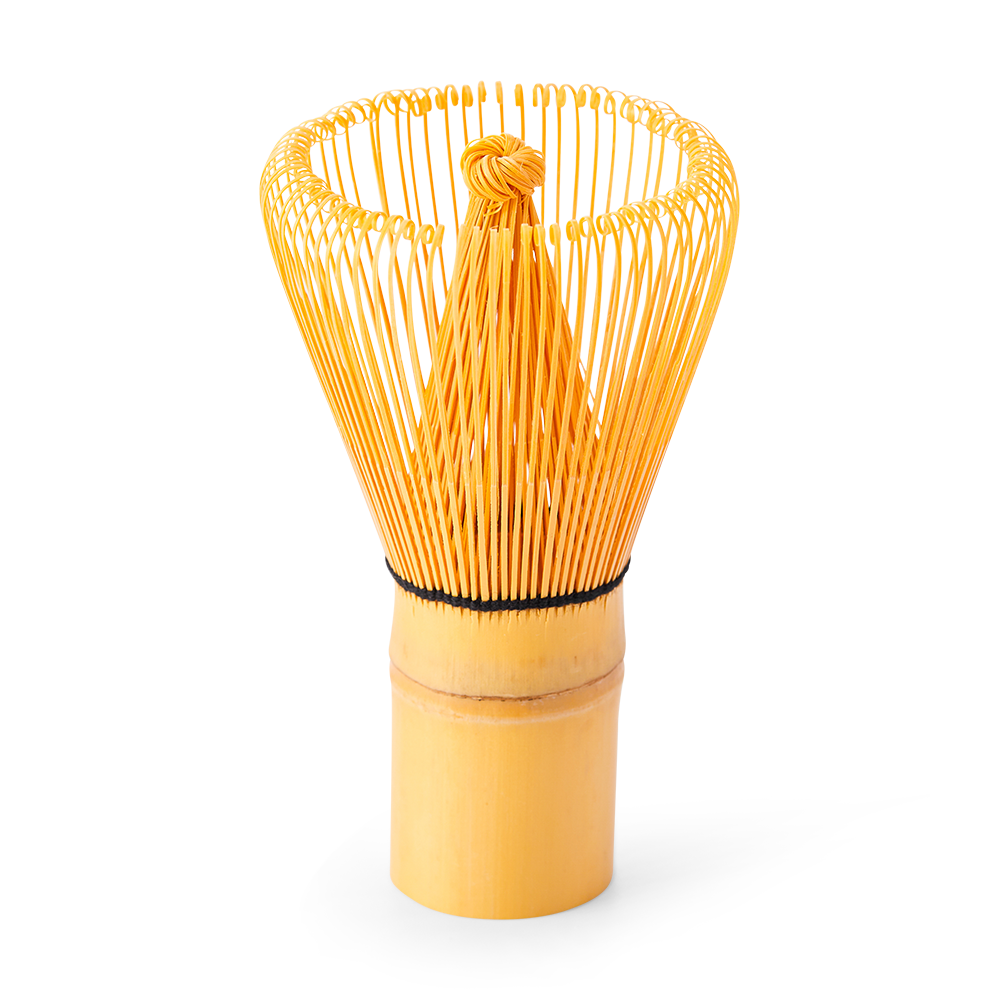
5 Easy Tips on How to Clean a Matcha Whisk for Long-Lasting Use
A matcha whisk, or bamboo whisk (chasen), is an essential tool for preparing traditional matcha. Properly cleaning your bamboo whisk ensures it lasts longer, prevents mold, and helps maintain the smooth, frothy consistency of your matcha. By following the right care techniques, you can extend the life of your chasen and preserve its ability to whisk matcha green tea powder to perfection.

What is a Matcha Whisk (Chasen)?
Crafted from a single piece of bamboo, a chasen (bamboo whisk) features delicate prongs designed to create a smooth, frothy cup of matcha. Rooted in Japanese tea traditions, the matcha whisk embodies precision, mindfulness, and respect for the art of tea-making.
Historically, the use of a chasen dates back to the 15th century during the rise of the Japanese tea ceremony, or chanoyu. Tea masters perfected the art of whisking, emphasizing the importance of balance and technique in achieving the ideal frothy consistency. Unlike metal whisks or electric frothers, a bamboo whisk maintains the authenticity of matcha preparation while preserving the green tea powder’s flavor and texture.

Preparing Your Chasen Before Use
Before using your matcha whisk, it is important to soak it in warm water for about 30 seconds to 1 minute. This step softens the delicate bristles, making them more flexible and less prone to breakage while whisking. It also helps to create smoother and frothier matcha while ensuring the longevity of your whisk. Once softened, your chasen is ready to use.
Why Proper Bamboo Whisk Cleaning Matters
Knowing how to clean a matcha whisk properly is key to preserving its lifespan and ensuring the best matcha experience. Regularly cleaning your bamboo whisk prevents mold buildup, maintains its shape, and ensures consistent froth without breakage or warping.
Follow this simple 5-step guide to clean your matcha whisk effectively and keep it in optimal condition for your daily matcha ritual.

5 Easy Steps to Clean Your Matcha Whisk (Chasen)
Step 1: Rinse Immediately After Use
Right after whisking matcha, rinse your chasen under warm water. Avoid using soap, as it can damage the bamboo and leave behind an unwanted residue. Gently rotate the whisk under running water to remove any remaining matcha particles.
Step 2: Soak in Warm Water (Optional)
For deeper cleaning, soak your chasen in a bowl of warm water for about 30 seconds to 1 minute. This helps loosen any stuck matcha powder and keeps the bamboo hydrated, preventing it from drying out and becoming brittle.
Step 3: Avoid Harsh Scrubbing or Soap
Never scrub your bamboo whisk with a sponge or brush, as this can damage the delicate tines. Instead, gently shake off excess water and let it air dry naturally.
Step 4: Use a Whisk Stand for Proper Storage
After rinsing, place your bamboo whisk on a chasen stand (chasen kuse naoshi). This specially designed stand helps retain the natural curved shape of the whisk while allowing proper airflow to prevent mold or mildew. Storing it upright without a stand can cause the tines to warp over time.
For those looking to elevate their matcha practice, using a chasen stand is highly recommended. Explore our Chasen Stands (Chasen Kuse Naoshi) and other matcha tools to ensure your whisk stays in top shape for years to come.
Step 5: Let It Air Dry Completely
Place your chasen in a well-ventilated area to dry. Avoid storing it in a closed container or drawer while still damp, as this can lead to moisture buildup and potential mold growth.

Caring for Your Whisk: The Ritual of Matcha Preparation
Using a chasen is more than just whisking matcha—it is part of a centuries-old ritual that encourages mindfulness, presence, and appreciation. In Japanese tea culture, every step, from warming the bamboo whisk in hot water to gently whisking matcha in circular motions, is a meditative experience.
By properly caring for your matcha whisk, you not only extend its lifespan but also preserve the essence of this ritual. A well-maintained whisk enhances the froth, texture, and aroma of your matcha tea, making each preparation a moment of calm and connection.
For more matcha essentials, explore our collection of Japanese teaware and tea tools designed for you to discover a seamless and enriching tea experience.
If you want to read more articles on tea guides, check them out here:
- Matcha vs Coffee: Is Matcha Better than Coffee?
- New Year, New Rituals – A Modern Guide to A Matcha Tea Ceremony at Home
- How to Prepare Matcha: Usucha vs. Koicha
- 5 Unique Matcha Drink Recipes
- The Caffeine content in Matcha Green Tea versus coffee
Share your moment with us and stay connected on:









